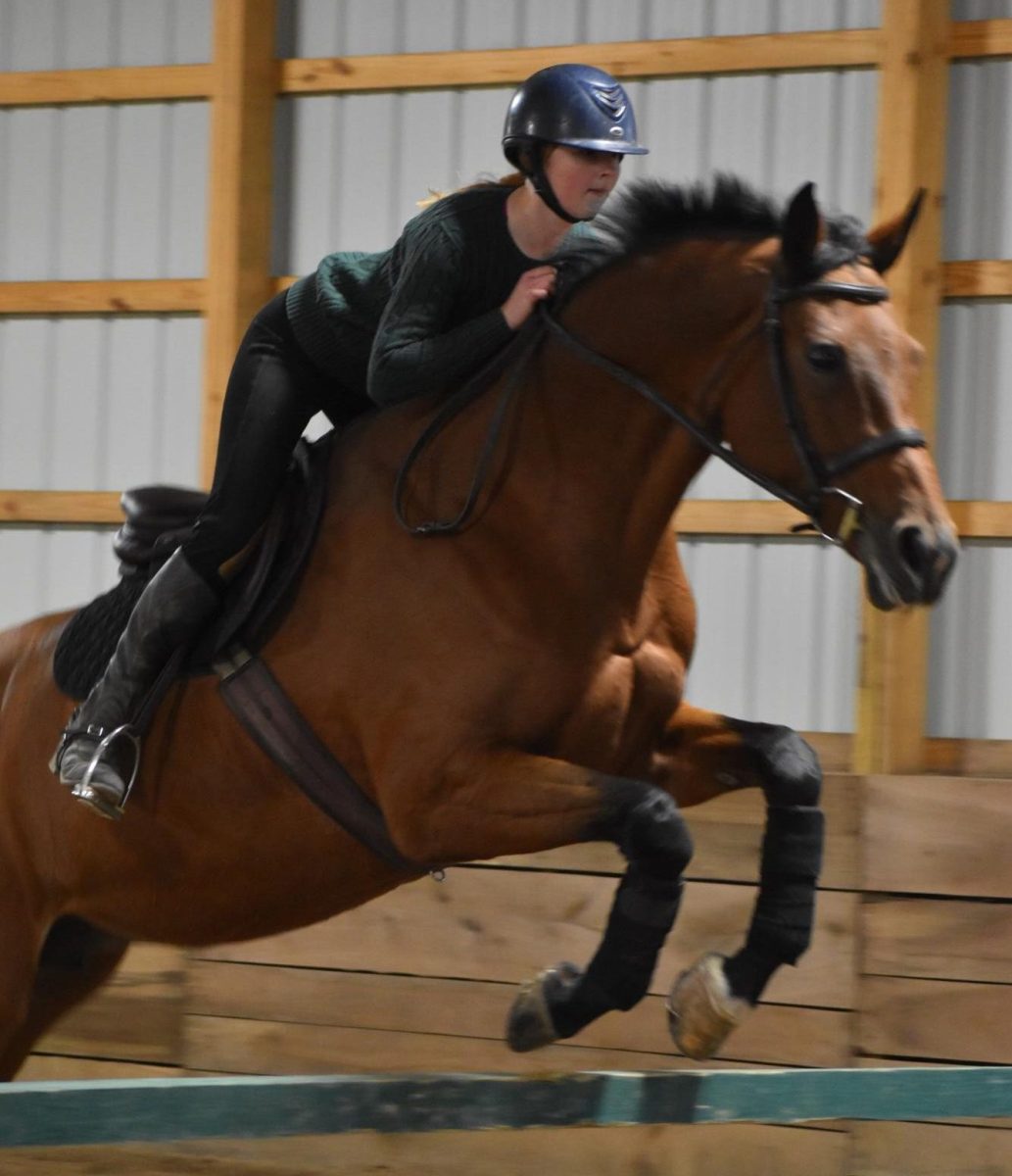By: Mary Queisser <[email protected]>
US History teacher Will Ellery said he believes in “active learning,” where his students get out of their seats and get involved in the curriculum. Recently, he had his class participate in a tug-of-war activity, simulating the Spanish-American War “tug-of-war” over Cuba. But sometimes, students force teachers to exclude such activities from the class plan due to disruptive behavior.
“The reason you do those activities is to give the kids a hitching post to hitch their memories and concepts to and to give a broader vision,” Ellery said.
“There are times when you just forego those activities because when kids are disruptive and all they’re looking for is fun and trying to create it as something other than what your intention was, then you have to consider whether you really want to do that activity.”
However, the teacher still must teach the material to the class. “One of the ways we can learn is to have me standing in front of you and lecturing you the whole time, if that is the only way you seek to respond,” he said.
Senior Jamie Juang said she often sees students take advantage of teachers for cheap laughs. “It’s OK every once in a while, but if (students) do it too much it gets really annoying and we get nothing done,” she said.
Juang said that she tries not to get caught up in the problem and to ignore it.
Ellery said generally there are a few leaders who create a problem. “The big drawback is for the students who don’t want those kids. You do feel for those kids, but at the same time,
To correct the behavior of the problem students, Ellery said that he talks to them on the side and tries to make them understand that they can be leaders. “Leadership shows in one of two ways,” he said. “(It shows) either positively to do the right thing, or as the case in that destructive situation, negatively. He leads everyone in the wrong direction.”
These problem-causing students aren’t necessarily underclassmen, as age isn’t necessarily an indication of maturity. “That conclusion would draw to the idea that you can’t do any of that kind of active learning with kids as they are younger. So I don’t believe that’s true,” he said. “You may have a junior or a series of juniors who are more immature than a large group of freshman.”
However, Ellery said he believes in the value of an interactive classroom, but with limits. “If trying to do the activities is counter-productive, and you’re not achieving what you’re trying to do, then it’s not worth doing.”


































![British royalty are American celebrities [opinion]](https://hilite.org/wp-content/uploads/2024/03/Screenshot-2024-03-24-1.44.57-PM.png)


















![Review: “Suits” is a perfect blend of legal drama and humor [MUSE]](https://hilite.org/wp-content/uploads/2024/04/unnamed-1.png)
![Chelsea Meng on her instagram-run bracelet shop [Biz Buzz]](https://hilite.org/wp-content/uploads/2024/04/IMG_2446-1200x838.jpg)
![Review: Quiet on Set: The Dark Side of Kids TV is the long awaited exposé of pedophilia within the children’s entertainment industry [MUSE]](https://hilite.org/wp-content/uploads/2024/04/unnamed.jpg)
![Review: “The Iron Claw” cannot get enough praise [MUSE]](https://hilite.org/wp-content/uploads/2024/04/unnamed.png)
![Review: “The Bear” sets an unbelievably high bar for future comedy shows [MUSE]](https://hilite.org/wp-content/uploads/2024/03/unnamed.png)
![Review in Print: Maripaz Villar brings a delightfully unique style to the world of WEBTOON [MUSE]](https://hilite.org/wp-content/uploads/2023/12/maripazcover-1200x960.jpg)
![Review: “The Sword of Kaigen” is a masterpiece [MUSE]](https://hilite.org/wp-content/uploads/2023/11/Screenshot-2023-11-26-201051.png)
![Review: Gateron Oil Kings, great linear switches, okay price [MUSE]](https://hilite.org/wp-content/uploads/2023/11/Screenshot-2023-11-26-200553.png)
![Review: “A Haunting in Venice” is a significant improvement from other Agatha Christie adaptations [MUSE]](https://hilite.org/wp-content/uploads/2023/11/e7ee2938a6d422669771bce6d8088521.jpg)
![Review: A Thanksgiving story from elementary school, still just as interesting [MUSE]](https://hilite.org/wp-content/uploads/2023/11/Screenshot-2023-11-26-195514-987x1200.png)
![Review: When I Fly Towards You, cute, uplifting youth drama [MUSE]](https://hilite.org/wp-content/uploads/2023/09/When-I-Fly-Towards-You-Chinese-drama.png)
![Postcards from Muse: Hawaii Travel Diary [MUSE]](https://hilite.org/wp-content/uploads/2023/09/My-project-1-1200x1200.jpg)
![Review: Ladybug & Cat Noir: The Movie, departure from original show [MUSE]](https://hilite.org/wp-content/uploads/2023/09/Ladybug__Cat_Noir_-_The_Movie_poster.jpg)
![Review in Print: Hidden Love is the cute, uplifting drama everyone needs [MUSE]](https://hilite.org/wp-content/uploads/2023/09/hiddenlovecover-e1693597208225-1030x1200.png)
![Review in Print: Heartstopper is the heartwarming queer romance we all need [MUSE]](https://hilite.org/wp-content/uploads/2023/08/museheartstoppercover-1200x654.png)






















![Review: Ladybug & Cat Noir: The Movie, departure from original show [MUSE]](https://hilite.org/wp-content/uploads/2023/09/Ladybug__Cat_Noir_-_The_Movie_poster-221x300.jpg)

![Review: Next in Fashion season two survives changes, becomes a valuable pop culture artifact [MUSE]](https://hilite.org/wp-content/uploads/2023/03/Screen-Shot-2023-03-09-at-11.05.05-AM-300x214.png)
![Review: Is The Stormlight Archive worth it? [MUSE]](https://hilite.org/wp-content/uploads/2023/10/unnamed-1-184x300.png)

